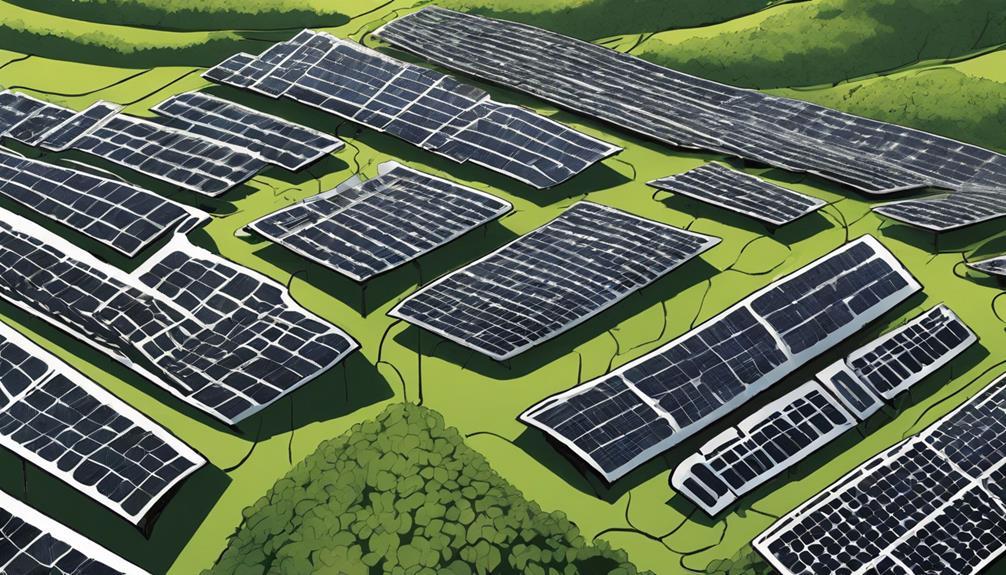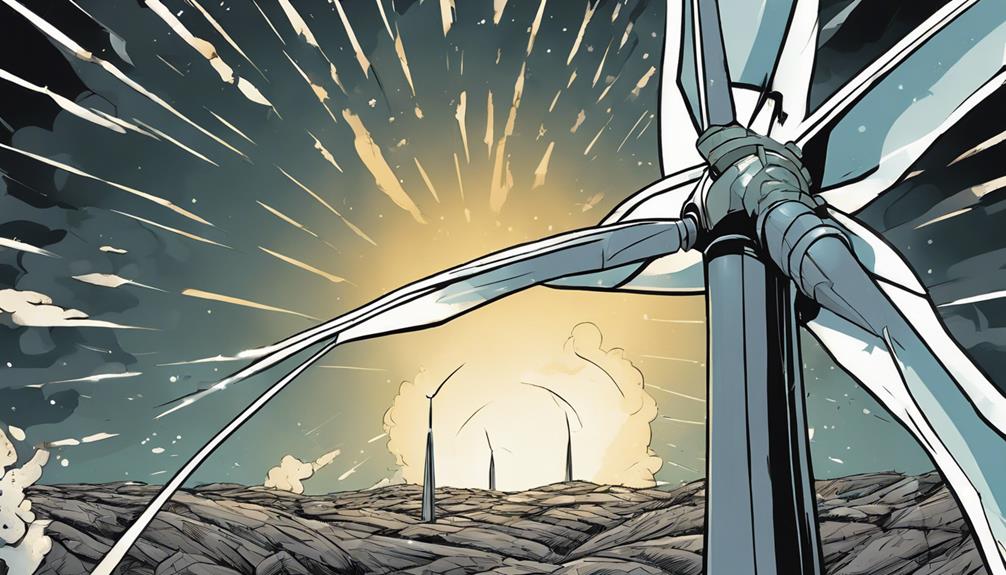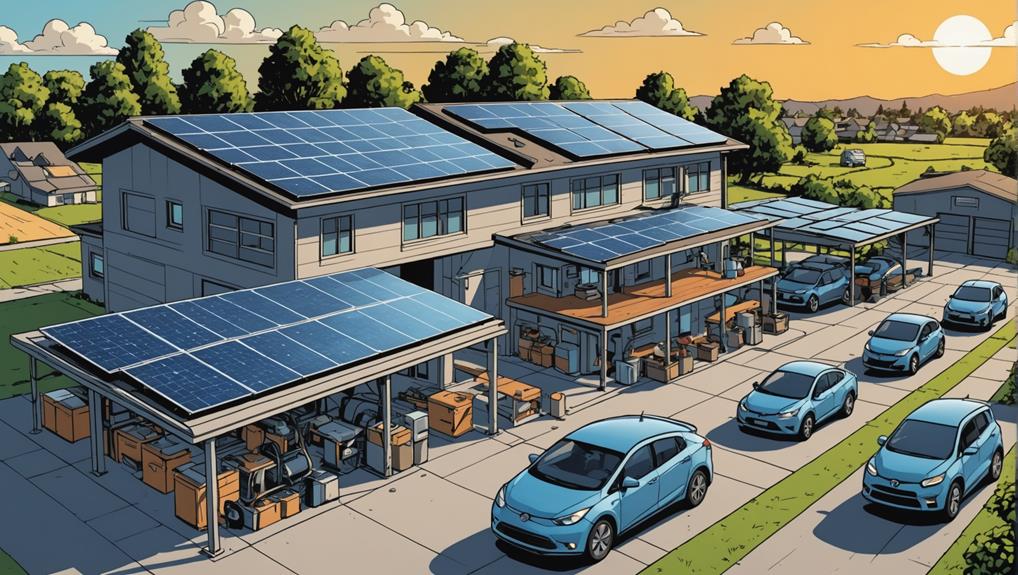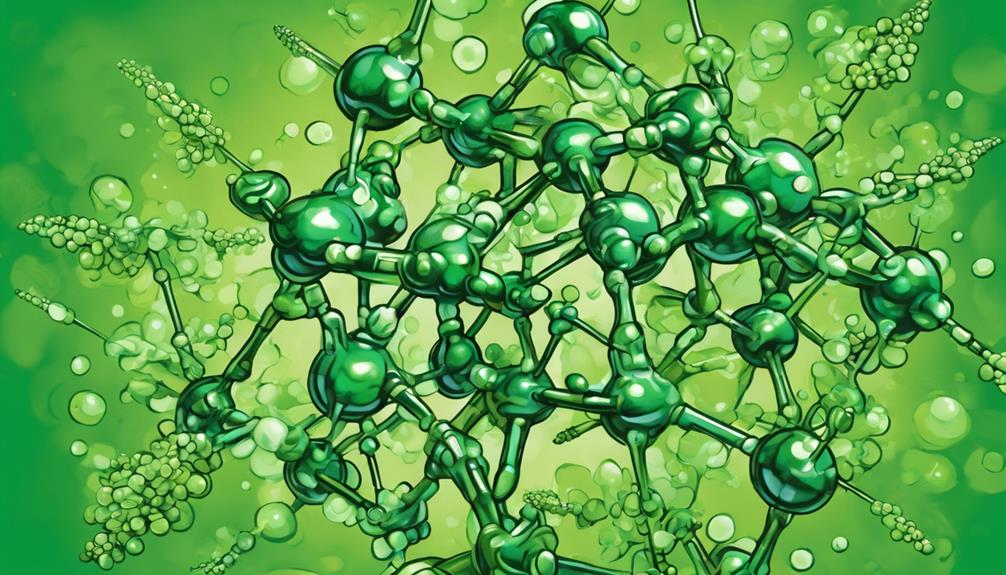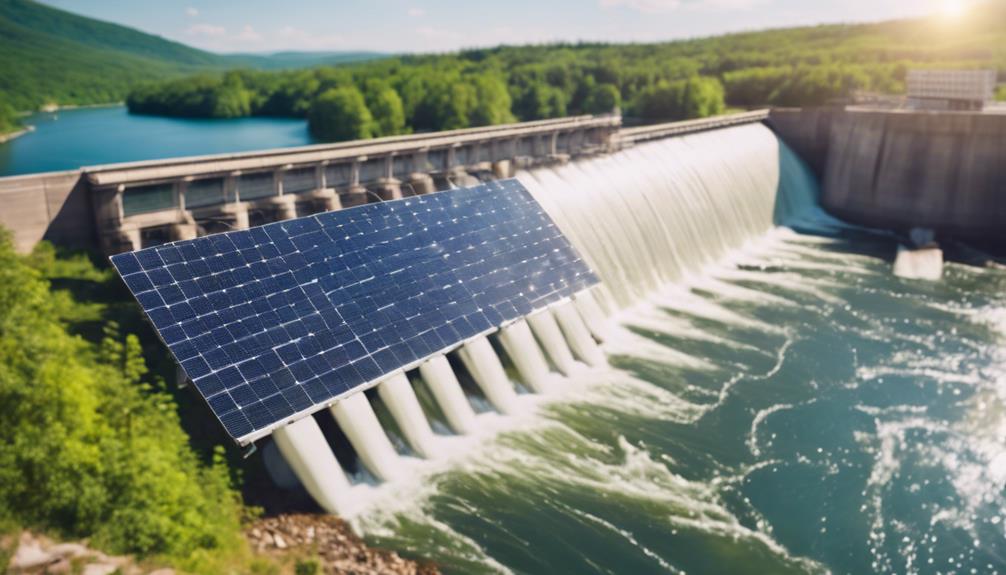When it comes to solar farm design, I know that maximizing energy generation efficiency is key. It all starts with selecting the right site, considering factors like sunlight availability, land topography, and wildlife concerns. From there, I focus on optimizing energy output through proper panel orientation, ideal row spacing, and effective tracking systems. Advanced technologies like bifacial panels and CPV systems can also boost efficiency. By integrating these innovations with proactive maintenance and monitoring strategies, solar farms can minimize environmental impact and reduce production costs. As I explore the latest designs and technologies, I'm excited to uncover even more ways to harness the power of the sun.
Key Takeaways
- Proper panel orientation and tracking systems maximize energy generation and reduce energy losses in solar farm design.
- Advanced solar panel technologies, such as bifacial and perovskite cells, increase energy output and drive cost-efficient energy generation.
- Well-designed layouts considering land topography, wildlife concerns, and historical weather data can boost efficiency by up to 45%.
- High-efficiency solar panels, advanced inverters, and energy storage systems enhance energy output and reduce production costs.
- Regular maintenance, proactive monitoring, and predictive strategies ensure peak performance, reduce downtime, and extend panel lifespan.
Site Selection and Environmental Impact

When selecting a site for a solar farm, I consider factors like sunlight availability, land topography, and proximity to electrical substations to maximize energy generation while minimizing environmental impact.
It's important to assess the site's environmental impact, including wildlife concerns and space requirements for solar panels and infrastructure. A thorough evaluation helps identify potential issues and ensures that the solar farm is designed with sustainability in mind.
Maximizing Energy Generation Efficiency
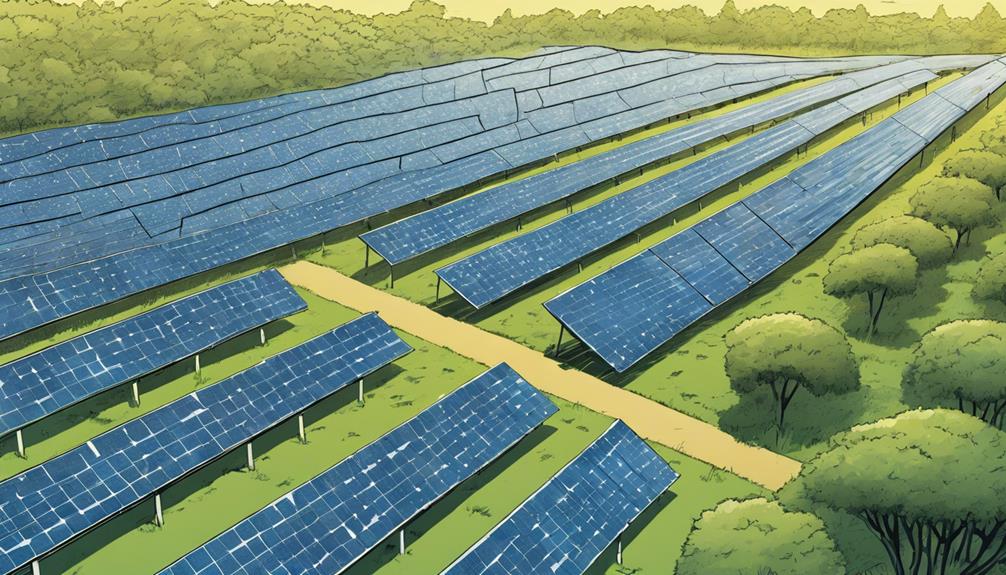
I enhance my solar farm design by carefully planning the layout, orientation, and tracking systems to maximize energy generation efficiency and guarantee the highest possible return on investment. A well-designed solar farm can greatly increase energy output, reducing the overall cost of energy production.
To achieve this, I consider the following important factors:
- Proper panel orientation: Ensuring panels face the correct direction to capture maximum sunlight
- Ideal row spacing: Allowing sufficient space between rows to minimize shading and reduce energy losses
- Effective tracking systems: Utilizing single-axis or dual-axis tracking systems to follow the sun's movement and maximize energy generation
- Regular maintenance: Performing routine cleaning, inspection, and maintenance to ensure peak performance and extend the lifespan of the solar panels
Integration and Maintenance Strategies
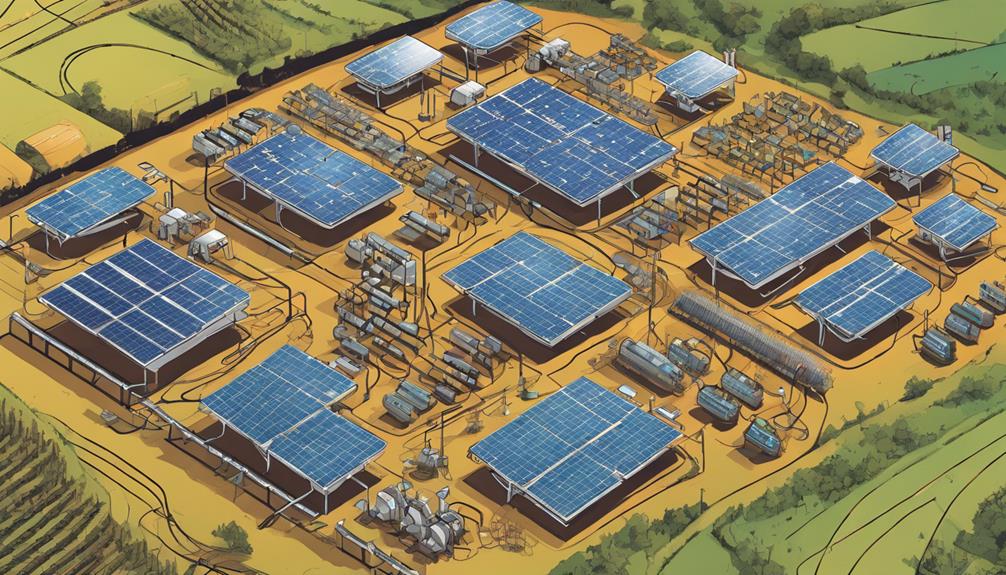
By integrating state-of-the-art components, such as high-efficiency solar panels, advanced inverters, and energy storage systems, and implementing proactive maintenance strategies, solar farm designers can optimize energy output, reduce downtime, and extend the lifespan of their installations.
I've seen firsthand how seamless integration of these components can lead to enhanced efficiency and cost savings. Regular monitoring, remote tracking, and predictive maintenance are essential for identifying potential issues before they become major problems.
Advanced Solar Panel Technologies
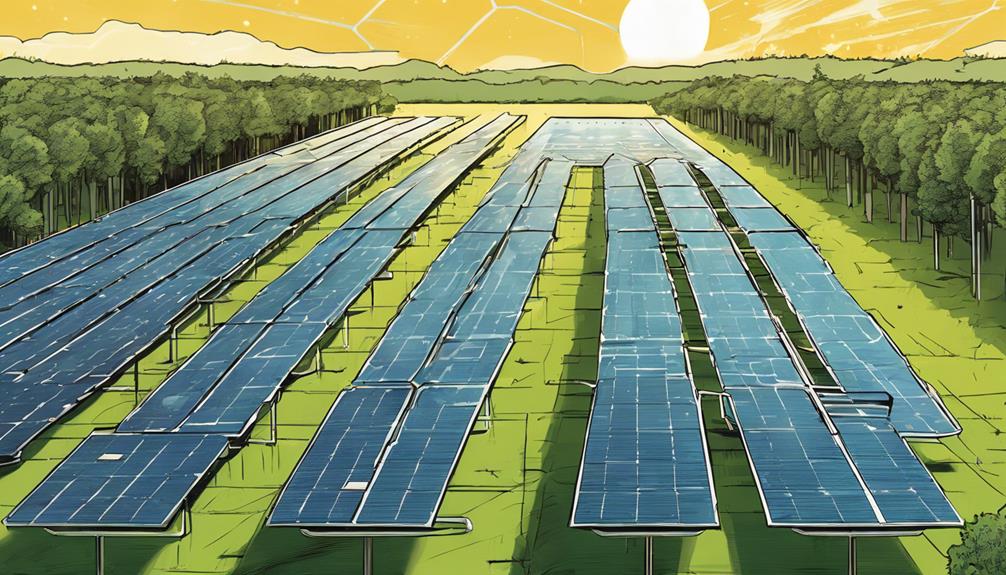
What advancements in solar panel technology are driving the future of solar farm design? As I explore the latest innovations, I'm excited to share my findings.
Emerging technologies are revolutionizing the industry, and it's essential to stay updated. Here are some key advancements:
- Bifacial Solar Panels: These panels can absorb light from both the front and back sides, increasing energy output by up to 25%.
- Perovskite Solar Cells: This new material has shown higher power conversion efficiency rates than traditional silicon-based cells.
- Thin-Film Solar Cells: Thinner and lighter, these cells offer improved flexibility and reduced production costs.
- Concentrated Photovoltaic (CPV) Systems: By focusing sunlight onto a smaller area, CPV systems can achieve higher efficiency rates than traditional panels.
These advancements are transforming the solar farm design landscape, enabling more effective and cost-efficient energy generation.
Optimizing Farm Design and Layout
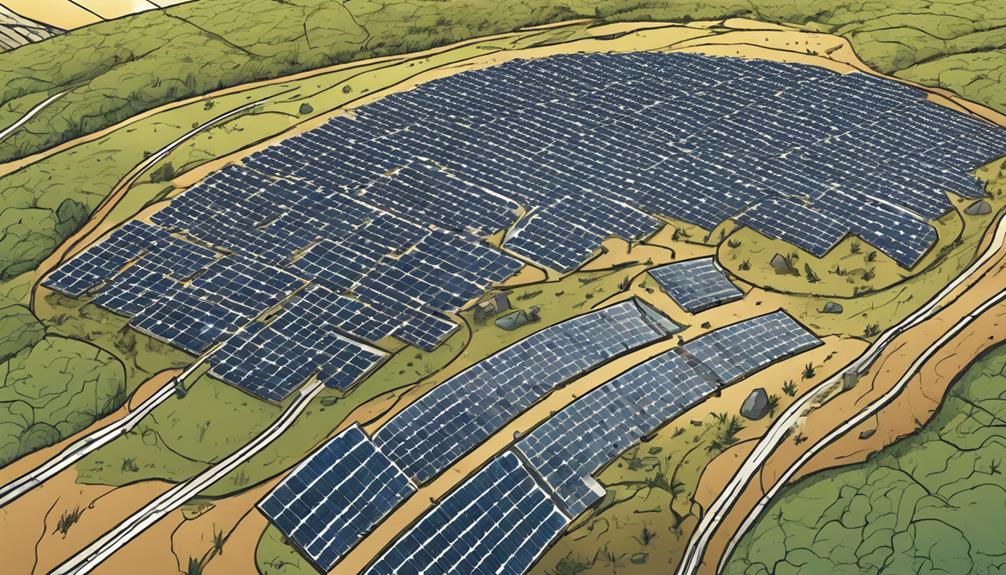
Solar farm designers must carefully balance multiple factors, including panel orientation, spacing, and tracking systems, to maximize energy generation and minimize land use. A well-designed layout can have a significant impact on energy output, with ideal panel orientation and tracking systems boosting efficiency by up to 45%.
I consider factors like land topography, environmental impact, and wildlife concerns to guarantee a harmonious integration of the solar farm with its surroundings. By analyzing historical weather data and sunlight exposure, I can optimize panel placement and spacing to minimize shading and maximize energy production.
Effective use of land is vital, and I aim to achieve the highest energy output per acre while minimizing environmental footprint.
Energy Consumption and Sunlight Analysis

I analyze historical weather data and sunlight exposure to estimate energy usage and solar potential, ensuring that my solar farm design meets the specific energy demands of the location. This vital step helps me determine the best number of solar panels required to generate the needed energy.
By examining electricity bills and consumption patterns, I can identify seasonal variations and peak usage periods.
Historical weather data informs panel placement and orientation for maximum sunlight exposure.
Sun path analysis reveals the ideal angle and tilt for panels to capture sunlight throughout the day.
Shading factors, such as trees or buildings, are considered to minimize energy loss.
Net metering and government incentives are evaluated to maximize the benefits of selling excess energy back to the grid.
Efficiency Improvement and Performance Monitoring
To maximize energy generation, I implement regular monitoring and maintenance schedules to identify and address any performance issues promptly. This proactive approach guarantees that my solar farm operates at peak levels, minimizing energy losses and reducing downtime. By leveraging advanced monitoring systems and predictive maintenance strategies, I can detect potential issues before they impact energy production.
| Monitoring Strategy | Benefits |
|---|---|
| Real-time performance tracking | Identify issues promptly, reducing downtime |
| Predictive maintenance | Detect potential issues before they occur |
| Regular cleaning and inspection | Maintain peak panel efficiency |
Frequently Asked Questions
How Do Solar Farms Address Energy Storage and Grid Stability Concerns?
As I explore solar farm design, I realize that energy storage and grid stability concerns are addressed through innovative solutions like battery integration, smart grids, and predictive analytics, ensuring a seamless and reliable energy supply.
Can Solar Farms Be Designed for Urban or Rooftop Installations?
"Yes, I can design solar farms for urban or rooftop installations by optimizing panel layout, using high-efficiency panels, and integrating energy storage systems to maximize energy generation in limited spaces."
What Role Do Energy Storage Systems Play in Solar Farm Operations?
"As the sun sets on fossil fuels, energy storage systems are the unsung heroes of solar farm operations, bridging the gap between generation and consumption, ensuring a seamless dance of power and efficiency."
How Do Solar Farms Ensure Cybersecurity and Data Protection?
"As I design solar farms, I prioritize cybersecurity by implementing robust firewalls, encryption, and access controls to safeguard data and prevent hacking, ensuring the integrity of our energy generation and distribution systems."
Can Solar Farms Be Integrated With Other Renewable Energy Sources?
"I'm stuck in a renewable energy utopia where solar farms harmoniously coexist with wind turbines and hydroelectric power – yeah, it's a real thing Can I integrate them? Absolutely, and I'd get a bonus for being an eco-superhero!"
What are the Innovative Design Strategies in Solar Farm Efficiency?
Innovative design strategies are revolutionizing solar farm efficiency strategies. By incorporating advanced technology and smart layout planning, solar farms can maximize energy production and minimize land use. Some strategies include tracking systems for optimal sun exposure, efficient panel placement, and utilization of advanced materials for enhanced energy capture.
Conclusion
As I wrap up this journey into the world of solar farm design, I'm left wondering: what's stopping us from harnessing the full potential of this game-changing technology?
With innovations like bifacial panels and tracker systems, and strategies like precision maintenance and energy consumption analysis, the possibilities seem endless.
It's time to shine a light on the future of renewable energy – a future that's brighter, cleaner, and more sustainable than ever before.
